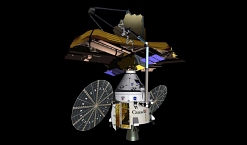
Canada provides R&D for next-generation robotic arms
By Design Engineering staff
General R&D Robotics space explorationThe Canadian Space Agency has begun R&D on a new generation of robotic arms by providing B.C.'s MacDonald Dettwiler and Associates seed money to perform the research.

The Canadian Space Agency (CSA) has begun research and development on a new generation of robotic arms, the kind that work in zero-gravity and deal with heavy lifting aboard the ISS and NASA space shuttles, by providing B.C.-based MacDonald Dettwiler and Associates (MDA) seed money. This R&D could ultimately be used for NASA’s Orion Crew Exploration Vehicle, developed by the NASA to replace the soon-to-be-retired shuttle fleet.
This is another step forward in the CSA’s long-term space plans, looking to return the nation to the forefront of space exploration and development.
According to Space.com, upon completion, “the new arm will most likely be given freely to the United States, in exchange for a place on the Orion mission. In other words, the CSA simply wants one of its guys in space, or maybe even on the Moon.” One of the CSA’s main objectives is to increase its collaboration with NASA, as well as with Europe and Japan.
As can be seen, the CSA is exploring future opportunities for Canadian participation in the new global space exploration initiative together with NASA and the other international space agencies. CSA has awarded MDA contracts to study three such opportunities: Canadian robotics for on-orbit servicing, a Canadian human lunar rover concept, and a Canadian robotic lunar lander mission. In each case MDA will work with leading companies and universities across Canada to develop potential concepts and Canadian roles. The Canadian Space Agency contracts are worth $1.8 million.
Steve Oldham, MDA’s vice-president in charge of this business, said, “The award builds on MDA’s 30-year heritage as a prime contractor for major Canadian space science and technology initiatives, from RADARSAT and the Canadarms, to the recent Martian arctic weather station.”
Reportedly, MDA has already begun investigating the effects of zero gravity on robotic components. “We’re hoping it’s the thin edge of a significant wedge as Canada moves more towards the next generation of its space exploration program,” Oldham told Space.com.
www.mdacorporation.com
www.space.gc.ca
